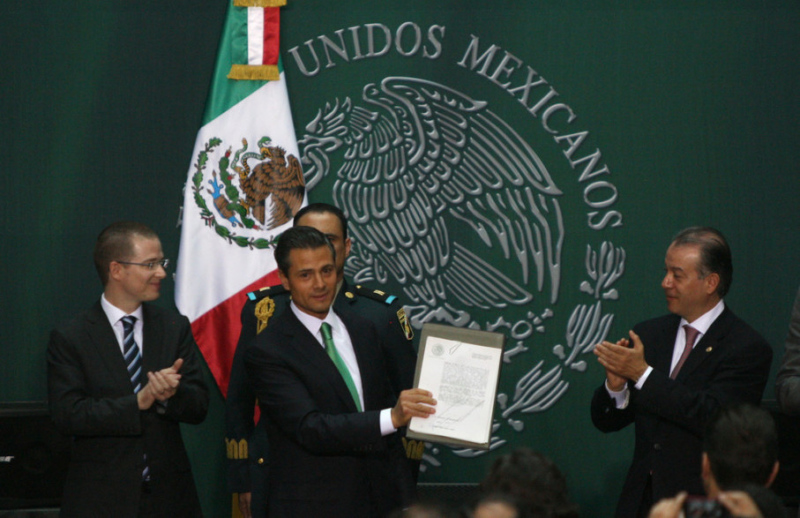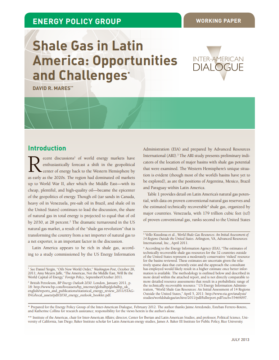A Year with a High Dose of Elections
In 2012, three presidential elections – in Mexico, Venezuela, and the United States – could alter the political map and relations in the Americas.
The results of Mexico’s energy reforms may fall well short of government promises and public expectations, cautioned energy experts Horacio Cuevas and Nicolas Puga. Speaking at the Inter-American Dialogue on June 6th, Cuevas and Puga both warned that ambitious plans to modernize Mexico’s electricity sector could be undermined by a wide range of challenges.
Mexico’s power sector faces major challenges. Rising demand, crumbling infrastructure and inefficient power plants have increased the price of electricity. In a bid to reduce costs, Mexico’s new government has passed a historic constitutional reform and now looks poised to pass secondary, clarifying legislation. Opening the electricity market to private sector competition, proposed changes will reduce the financial and operational burden of Mexico’s state-owned Federal Electricity Commission (CFE) and direct new resources towards much-needed investments in generation and infrastructure. “It is impressive and positive to see this level of transformation,” noted Inter-American Development Bank expert Horacio Cuevas, “especially since multiple reform attempts by previous administrations did not see the light of day.”
Implementing the proposed changes will prove challenging, however. Mexico’s government has promised that prices will decrease within two years of promulgating secondary legislation. But that’s highly unlikely according to Nicolas Puga, a partner with Bates White Economic Consulting. He estimates that electricity costs would need to decrease by a dramatic 25 percent in order to reduce end costs for residential consumers, who currently benefit from significant government subsidies. Mexico will face additional obstacles to cutting generation costs, including poor national infrastructure for natural gas, high losses in distribution, and weak energy sector institutions.
As the reform process continues to advance, much will depend on rulemaking and regulation by national agencies. Setting attractive terms for new contracts will be essential for encouraging private investment in the power sector. Further measures will also be needed to bring the share of clean energy sources in power generation to Mexico’s goal of 35 percent by 2024 from roughly 15 percent today. New provisions for clean energy certificates could incentivize new wind and solar projects, as could new laws being drafted by the Peña Nieto administration. But, as with other aspects of Mexico’s electricity reforms, whether these new mechanisms can be effectively put into practice remains to be seen.
In 2012, three presidential elections – in Mexico, Venezuela, and the United States – could alter the political map and relations in the Americas.
How will measures in Colorado and Washington affect the federal government’s relationship with Mexico in the ongoing fight against drug cartels?
Unless resource nationalism can be made compatible with providing incentives for significant foreign participation, it may be too early to start trumpeting a bonanza for Latin America.
 Presidency of Mexico / CC BY-SA 3.0 / Flickr
Presidency of Mexico / CC BY-SA 3.0 / Flickr
